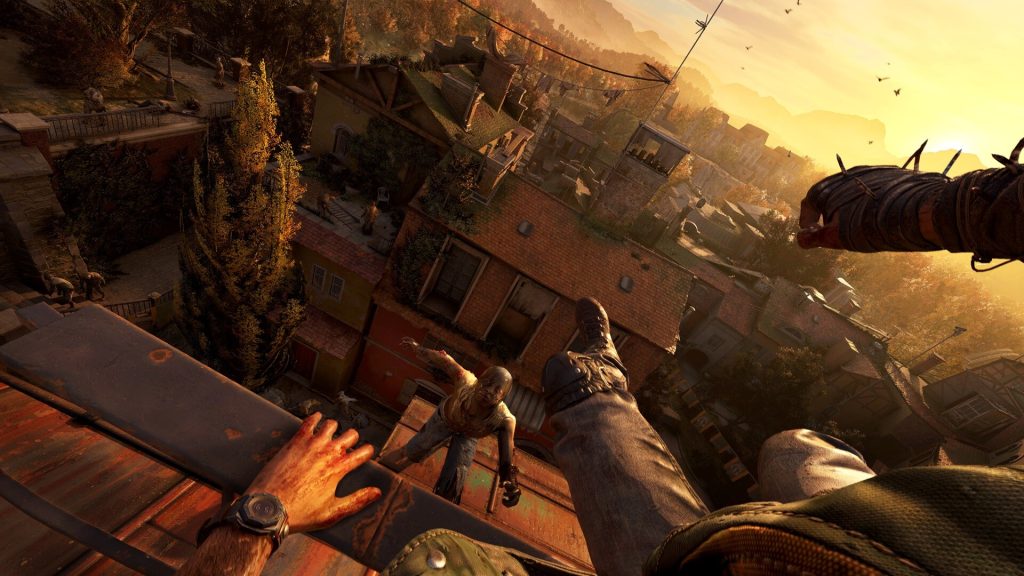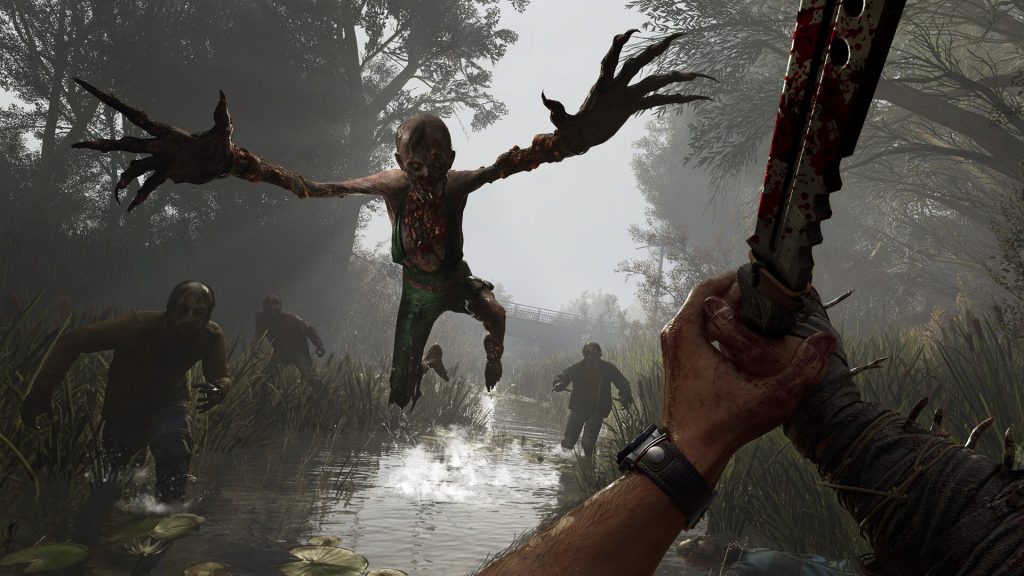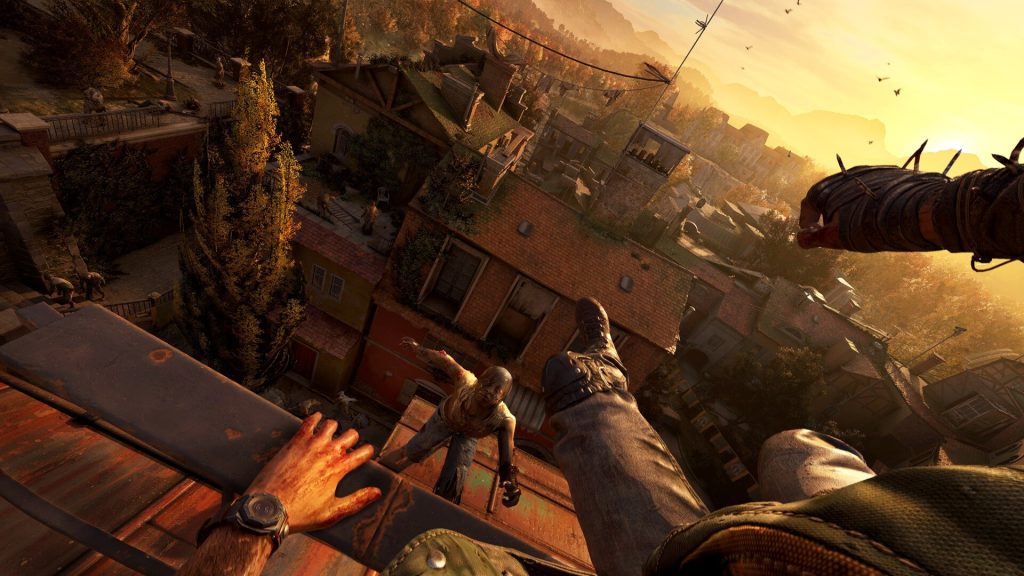Now that we’ve played Dying Light: The Beast and experienced everything that the game has to offer first-hand, our thoughts immediately went back to Dying Light 2. While the return of a familiar face from that instalment in the franchise could have been what set that off, Techland’s past work has certainly influenced its present title, with The Beast proving to be quite an evolution of the franchise’s formula.
However, it’s still a good idea to compare The Beast to the game that came before it, and to analyze how Techland managed to up the ante this time around, as it brought Kyle Crane back to the spotlight for what was a very interesting story indeed.
Without further ado, it’s time to look into the many mechanics that made both games as popular as they are, and to put them in a conversation with one another to see which one comes out on top.
The Franchise’s Formula
Dying Light’s emphasis on parkour-based traversal is the stuff of legends by now. It’s been so ever since Rahim trained Kyle to use Harran’s environmental setting to his advantage as he scoured the city for a cure against the Harran virus. Aiden seemed to have a similar skill set in Dying Light 2, but was it objectively better than The Beast?
Well, that’s a tricky one to answer. Both titles have environments designed to support a traversal loop that’s both satisfying and nearly effortless to pull off for players. Dying Light 2 (hereafter called DL2) was certainly an improvement over the first game, and The Beast brings in new animations and overall refinements to the experience. We’d say that Beast’s coyote time felt a tad more forgiving than DL2 with better vault chains and tighter mantles.

However, the difference is so close that you’d be forgiven for calling it negligible. Their parkour systems were designed to be a core pillar of the gameplay loop and, as such, present a very smooth and seamless way for their protagonists to get around the worlds they found themselves in. We’d say it’s a tie between both titles as far as parkour is concerned.
But parkour is only one part of the equation when the manner in which Dying Light’s protagonists traverse varying environments is considered. In this regard, DL2’s grappling hook, paraglider, and UV tools were all very important parts of its gameplay loop, with enough narrative grounding to justify their existence in the game.
While only the grappling hook makes a comeback in The Beast, it wouldn’t have made sense to have the paraglider for Kyle to use around the Castor Woods, considering its varied environments in comparison to Villedor’s more urban landscape. Moreover, the existence of driveable vehicles in The Beast allowed for a fast, efficient way to get around the open world, and those 4x4s even serve as potent killing machines if you happen to come across a group of Infected during your travels.
But in terms of variety, Dying Light 2’s traversal tools take the win by a mile, considering how well they worked together in the game while also making sense from a narrative standpoint. While The Beast’s new map and story do not have the scope for more tools, their absence gives the edge to its predecessor in this area of the gameplay loop.

While we’re on the subject of exploration and traversal, it’s a good idea to get both titles’ level design out of the way. On this front, we’d have to give the win to The Beast, considering how each level and environment is not only as well-crafted as in DL2, but its successor takes things up a notch, cleverly placing valuable materials, lore drops, weapons, and secrets in every nook and cranny of its world.
Levels during missions are built to create tension in ways that DL2 does come close to, but cannot quite keep up with, thanks to the intervening years between the two titles. The Beast’s rooftop biome density, interior routing, lack of dead-ends for the most part, and parkour language simply takes the cake with style.
A Night That’s Dark and Full Of Terrors
With one half of Techland’s unique formula covered, it’s now time to dive into the combat and the franchise’s infamous day/night cycle that has terrified players in the many years since the original game was released.
Let’s begin with the distinct look and feel of Villedor and the Castor Woods, looking at them from a horror perspective. The night is simply terrifying in The Beast thanks to an improved enemy AI and the Volatiles that hunt you almost relentlessly in the latest title. While that may be a valid reason for handing the win to the new title, an area that DL2 certainly overtakes it is in the use of UV light as a safety language.

While you’re given a UV flashlight for Crane to use as a sort of stun against the Infected in The Beast, Aiden’s tryst with the THV virus requires that he constantly find shelter under UV rays to preserve his humanity enough for him to carry out his mission and save his sister. That mechanic added a layer of desperation to each mission and even exploration that upped the ante and tilted our opinion in DL2’s favor.
However, the use of clever references in The Beast and the overall sense of desolation that the Castor Woods convey must be considered. It’s a world that presents a stark contrast between its vibrancy and the effects of THV, presenting players with the sense that this was a place that once thrived with life and joy, now serving as a grim stage for Crane’s vengeful rampage against The Baron. As far as the atmosphere and horror elements of the franchise go, it’s a very close tie between both titles.
It’s a fairly similar story when you consider how the world reacts to your presence. It’s important to consider the narrative context of The Beast at this point. Crane’s latest adventure is one in which humanity barely exists, thanks to the effects of the THV virus, much more so than in Villedor, which was sort of protected from its devastation.
Villedor had multiple factions in play, allowing Techland to implement population shifts, patrols, ambient events that shifted from time to time, and a lot of agency with regard to the choices players could make in regard to the story. However, The Beast is a more straightforward story, and is one that did not require any of the above elements in its core gameplay loop as a result. DL2 does get a win on that front.

But it gets really interesting when things get dark. DL2 did see a lot of complaints about the Infected and even Volatiles not really concerned with Aiden’s presence, even at night, a factor that many considered was a step down from the original game, where nightfall meant that Crane was in serious trouble if he was far away from a safe point.
That tradition continues in The Beast and builds on the sheer panic that a player is likely to experience thanks to an enemy AI that absolutely fuels it. The Volatiles do not give up the hunt once they spot you, while the darkness around you is so suffocating that it becomes the greatest threat to the excellent traversal mechanics you have at your disposal.
The Beast’s night gameplay loop is designed to force errors on your part and is simply the superior experience when it is held against DL2. But what about combat and the various enemies you face? Things do get quite close on those fronts.
Both titles featured excellent combat systems and a variety of different Infected that sought to tear their respective protagonists to shreds. Although the distinct lack of firearms in DL2 does hold it back a little, it was still a solid experience and was very satisfying in terms of how you could deal with any threats you chose to take on mano a mano.

However, The Beast brings so many new combat animations, a very nifty Drop Kick skill, vehicles that can ram the Infected, a very responsive (and more aggressive) enemy AI, Beast Mode, and, of course, the Chimeras to the table. While we’d have been happy to call it a tie between the two games, these Chimeras let The Beast take the win outright thanks to their narrative significance and the challenge they present from a gameplay perspective.
As a crucial part of the story, they are unique and formidable, presenting Crane with very good reasons to unleash his own Beast Skills in order to gain an advantage. Their presence in The Beast allows it to surge ahead of DL2 as far as combat is concerned and take the win with style.
A Close Call But An Easy One
Given our love for Techland’s excellent take on the survival horror genre, we’re quite hard-pressed to pick a winner between two very solid games, each having something special to its name. But Dying Light: The Beast does just enough to build on everything good about Dying Light 2, and even throws in a few special additions of its own.
It’s a logical extension of the franchise’s formula, its mechanics and story allowing it to be the winner of this particular contest, although its predecessor does make that battle quite interesting.
It’s always great when a sequel manages to be better than the game that came before it. Here’s to us hoping that Techland can repeat that feat when it brings the franchise’s next, and potentially final, instalment to the table in the future!
Note: The views expressed in this article are those of the author and do not necessarily represent the views of, and should not be attributed to, GamingBolt as an organization.




This post offers an interesting comparison between the two games in the Dying Light franchise. It’s great to see the evolution of gameplay and storytelling over time. Looking forward to hearing more about your insights!
great to see how both games bring unique elements to the table. The open-world design in Dying Light 2 really enhances the sense of exploration, while The Beast offers a more focused narrative experience. It’s fascinating to see how these different approaches can cater to various player preferences!
Absolutely! The open-world design in Dying Light really enhances the gameplay experience, allowing for more exploration and strategy. It’s interesting to see how Dying Light 2 builds on that with even more verticality and dynamic environments. Each game definitely has its own charm!
I completely agree with you! The open-world design not only adds depth to the gameplay but also encourages exploration and interaction with the environment. It’s interesting to see how both games utilize this feature differently, especially in terms of verticality and parkour mechanics.
I’m glad you feel that way! The open-world design really does enhance the immersion, allowing players to explore and discover hidden elements. Plus, each environment in both games has its unique challenges that keep the gameplay fresh and exciting.
I completely agree! The open-world design definitely adds to the overall experience. Plus, the day-night cycle really changes the gameplay dynamics, making each moment feel unique and adding to the tension.
Absolutely, the open-world aspect really enhances the gameplay! I also think the dynamic day-night cycle creates such a thrilling atmosphere, especially when the zombies become more aggressive at night. It keeps players on their toes and adds an extra layer of strategy.